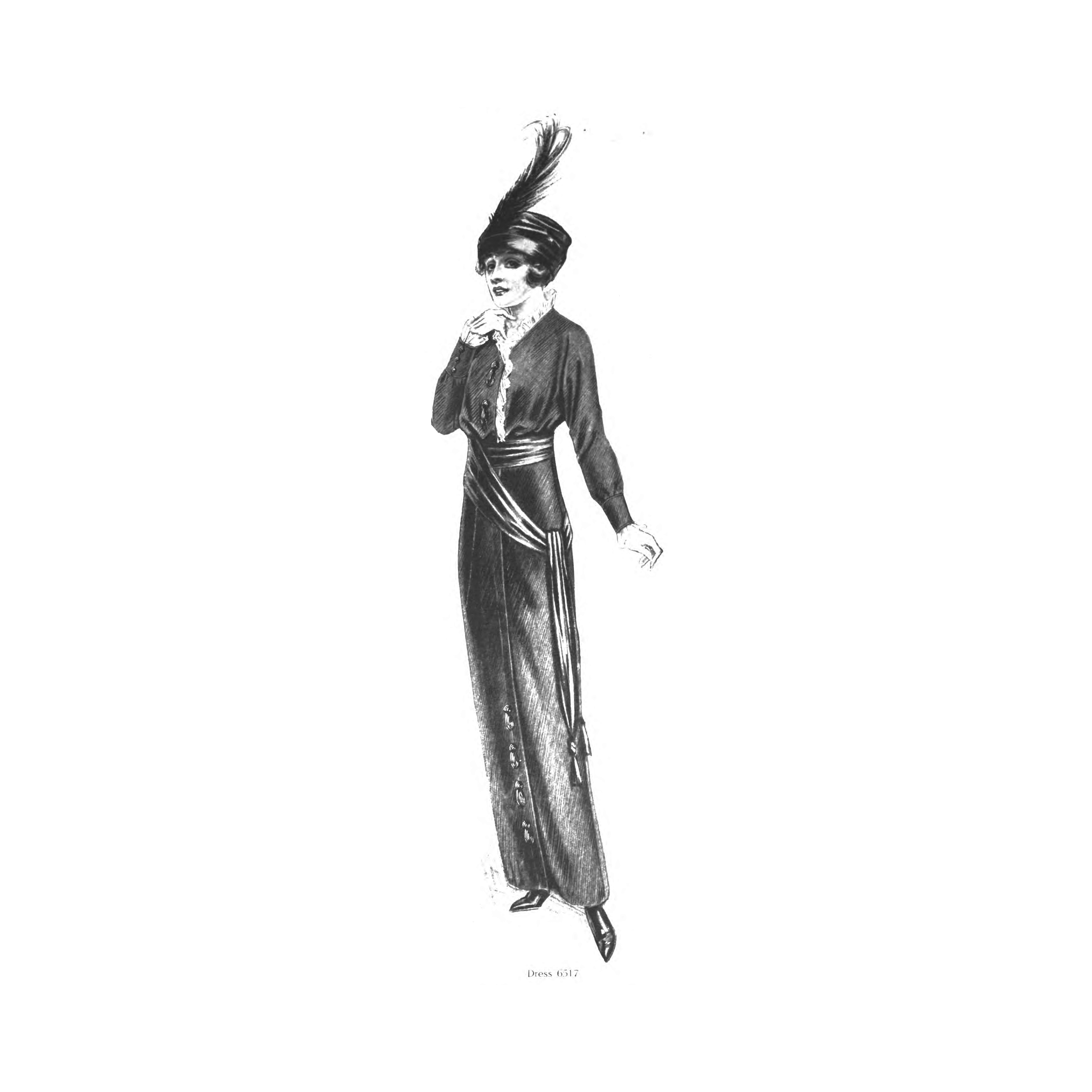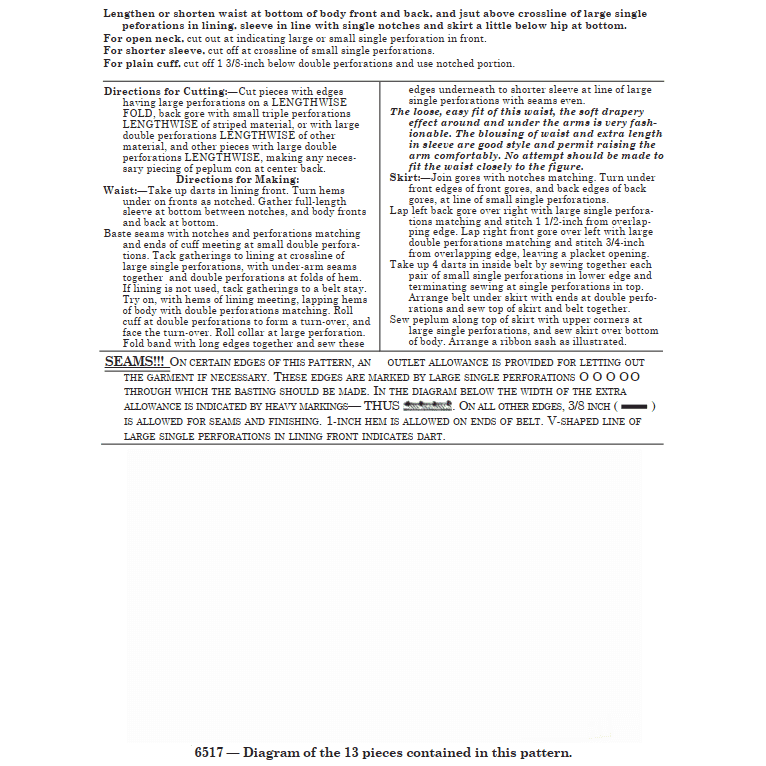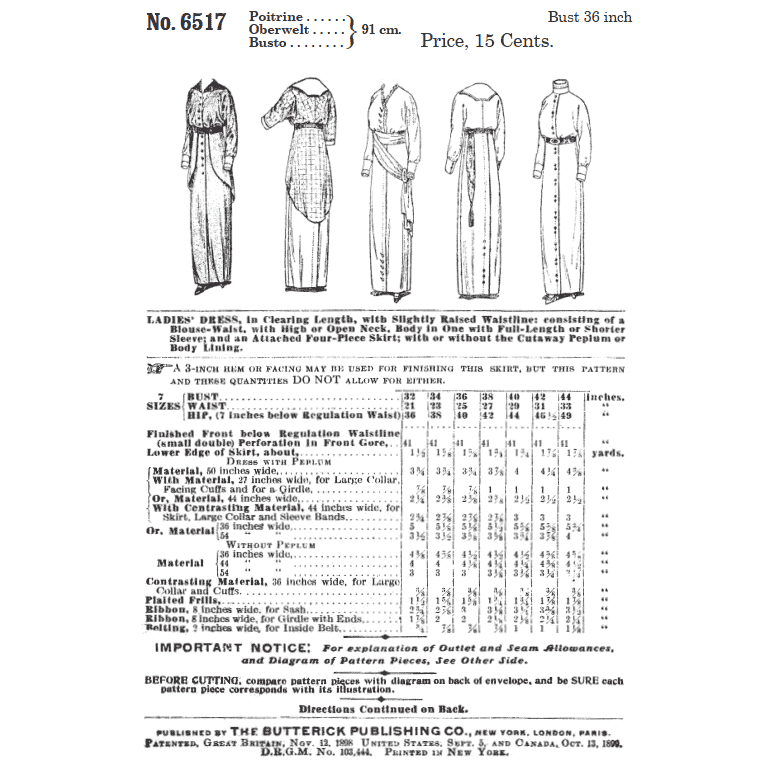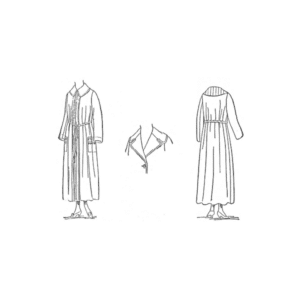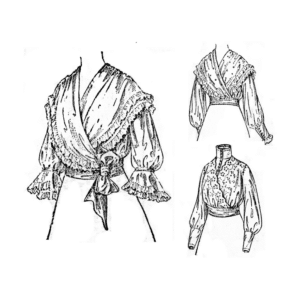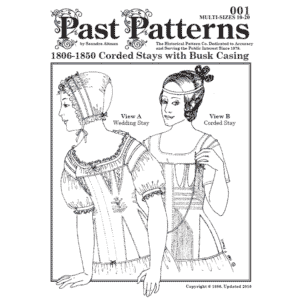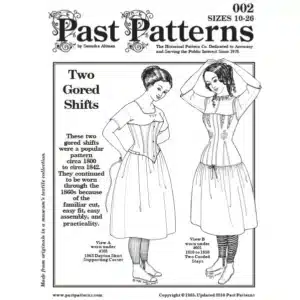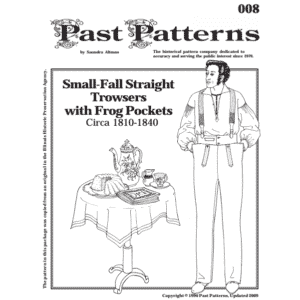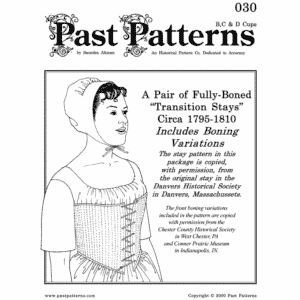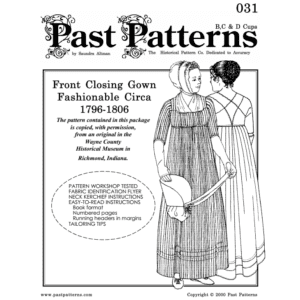All of our patterns tell a story.
Why Choose This Pattern?
Mid 1910s Dress Costume Sewing Pattern
Recreate the understated elegance of 1913 with this Mid 1910s Dress Costume Sewing Pattern, a historically faithful reproduction of Butterick Pattern 6517. Originally featured in the November 1913 issue of The Delineator, this design captures the soft, romantic silhouette and loose blouse-Waist styling that defined fashion during the early years of the First World War.
Historical Context
This Mid 1910s Dress Costume Sewing Pattern demonstrates what The Delineator called “the charm of studied simplicity.” The four-piece skirt in clearing length, the soft fullness of the blouse-Waist, and the option of adding a peplum or a standing collar gave fashionable women a refined but adaptable day dress.
“The loose, easy fit of this Waist is one of its chief attractions, and the soft drapery effect around and under the arms is very fashionable. The full-length sleeve with the slight fullness above the cuff is new and smart.” — The Delineator, Nov 1913
This pattern was described by Butterick as:
“The blousing of Waist and extra length in sleeve are good style and permit raising the arm comfortably. No attempt should be made to fit the Waist closely to the figure.”
Sizing Information
This pattern is drafted to fit a mid-1910s woman with:
Bust: 36" | Waist: 25" | Hips: 40"
Only this size is included in the pattern package.
Need resizing? Visit our free guide at:
https://pastpatterns.com/resizing-vintage-patterns/
Pattern Details
- Total of 13 pattern pieces
- Includes options for adding or omitting peplum and large collar
- Seam allowances clearly marked, with historical note on “Outlet Seams”
Material Requirements
- With Peplum: 5⅛ yards of 36" wide fabric
- Without Peplum: 4½ yards of 36" wide fabric
Suggested Fabrics
Recommended materials from the 1913 Delineator include:
- Gabardine
- Serge
- Ratine
- Velours de laine
- Corded woolens, stripes, checks
- Peau de souris, charmeuse, moiré, corded silks
Popular Colors
Colors for dresses of this era included pale cream, khaki, deep brown, rose, greens, purples, and blues—often solid, plaid, or striped.
What’s Included
- Original Butterick cover art with sizing and fabric charts
- Back cover with diagram of pattern pieces and cutting instructions
- Interior notes on the paper pattern industry and bust adjustment guide
- Three hand-drawn, computer-printed sheets: 36”x35”, 36”x46”, and 36”x47”
Difficulty Level
4 / 5 – Intermediate to Advanced
This pattern involves fitting a peplum option, managing a surplice bodice, and working with historical seam allowances, making it best for experienced sewists.
Printing & Packaging
All Past Patterns are printed on durable 20 lb. white paper and packaged in reusable plastic. We offer competitive domestic and international shipping, with automatic combined rates for multiple purchases.
Copyright & Credits
Copyright Past Patterns 1979–2025. All rights reserved.
Disclaimer: This pattern is a historically accurate reproduction of an original Butterick design. Past Patterns is not affiliated with, endorsed by, or licensed by Butterick. All references are for descriptive and historical purposes only.
Additional information
| Weight | 10 oz |
|---|---|
| Dimensions | 13 × 10 × 2 in |
Sizing Information
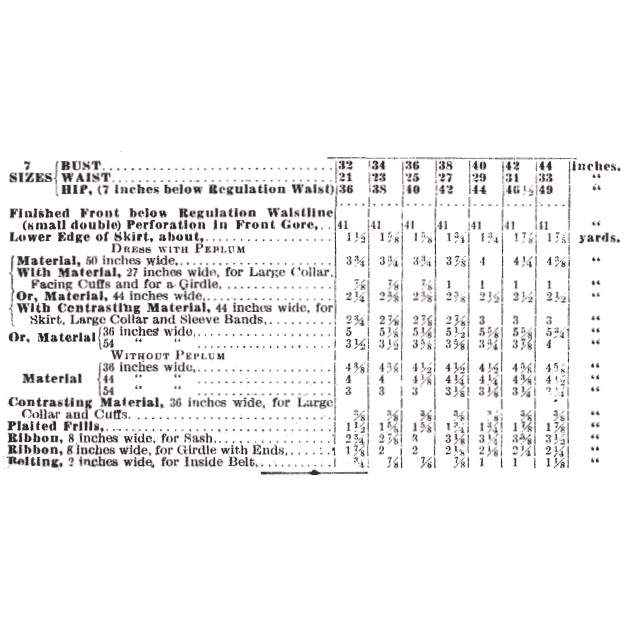
(Metric size sheet opens as a PDF in a new browser tab)
Preferred Vendors
Past Patterns works with vendors from all over the world to help us replicate the amazing articles of clothing. Now you can too!
Visit our preferred vendors page to order directly from some of our top recommended suppliers.
FAQ's
(Frequently asked questions)
Why are both Trowsers and Trousers listed on site?
Over the last 200 years, much like the human body, our style of language has changed. For vintage patterns, we attempt to use the language of the day where possible.
Can you grade (edit) a Vintage Revival pattern for my size?
please contact us with the specific pattern number and the specifications you require. We have staff available for this for an additional fee.
What sizes do Past Patterns patterns come in?
Our patterns, with some exceptions, are manufactured in sizes 8 through 26 for women and sizes 34 through 54 for men. Most patterns are multi-sized. For a complete listing of measurements in inches see the size chart.
Do you have vintage patterns (manufactured prior to 1950) that you want to sell?
we are always on the lookout for original, American designed, vintage patterns especially for categories outside of current items. We are interested if you have 1 pattern or 1000 patterns. Give us a call to discuss.
Why is my pattern size different from my off the rack dress size?
We use the U. S. Board of Standard Measurements to size our patterns. The ready made clothing manufacturers have their own set of sizes developed from their own statistics. For a complete listing of measurements in inches see the size chart.
How are the patterns packaged?
We package our patterns in two forms: Bond Paper and Tissue. Except for the Tissue patterns, each is slipped into a reusable plastic sleeve. Many contain documentation in the form of Historical Notes or the printer ie., Butterick. Because the patterns are printed in house to order, they can take from three to seven days. Tissue patterns, which are printed out of house, are available to ship immediately.
What does a Corset Kit contain in addition to the Corset pattern?
In addition to the pattern, the kits contain everything you need to make the corset except the thread. The kits contain, according to their type, fabric and lining, stays, clasp or busk board, back lacing, tape for finishing the edges, trim lace, ribbon, leather, tin stock, waist tape, punch and setter, eyelets, marking pencils, cording, reed and a loop turner.
Need a pattern in your language?
we can translate our instructions into just about any language
Have an old and incomplete Past Patterns item. What can I do?
The answer depends on if the pattern is still in production or not. If it is, please mail us the old pattern and we will ship you a copy of the latest pattern for a minimal fee along with normal shipping charges. If the item is no longer in production, we would need to know exactly what you have to determine the best course of action to help you.
What is the difference between a Past Patterns original pattern and a Vintage Revival pattern?
The Past Patterns originals were designed in house and based upon the research, disassembly and time of Saundra Ros Altman. These designs come from finds all over the United States reaching from San Diego, California to the Smithsonian Museum in Washington, DC. She created the initial patterns, the sizing charts and the instruction content. Many of the these patterns are multi-sized or are available in various sizes. For the most part, these designs are done taking into account the modern human body's shape, height and weight. The Vintage Revival patterns are traces or copies of an old, mass produced pattern; the first mass produced patterns came out in the 1850s. For the most part, you get exactly what came in the original package; in some cases, Saundra has appended historical notes to the instructions. The Vintage Revivals patterns, being copies of the originals, generally only come in one size and are based upon the size and shape of the human body from the era the pattern came from.
What software do you use to create patterns?
We utilize PW Studio for our designs. Isabelle Lott, a contributor over the years to Past Patterns, is the owner of the company and will be happy to answer an software related questions you have. Her software is available for licensing.
What measurements do I need to know to order a Corset Kit?
The bust and back length. The back length is measured from the prominent bone at the base of the neck to the natural waistline.
Where can I see the appropriate clothing fabrics for the 18th and 19th centuries?
You can see 1740 through 1940 fabrics in a book titled "Textile Designs" by Susan Meller and Joost Elffers. The subtitle states, "Two Hundred Years of European and American Patterns for Printed Fabric by Motif, Style, Color, Layout and Period and 1,823 Illustration in Color." What they don't say is that 90% of the swatches pictured are life size. The ISBN is 0-8109-3853-7. A second book is Wearable Prints, 1740-1860, History, Materials, and Mechanics by Susan W. Greene. The ISBN is 978-1-60635-124-6. Great books! Order it from your local library that has interlibrary loan capability if you cannot afford the price. There are now many sources for appropriate fabric through the Internet.
Where can I find antique patterns to purchase?
On the Internet try: "Patterns from the Past."
Need a pattern tomorrow?
we do offer expedited domestic shipping for extra fees. We can also expeditie international shipments but delivery dates overseas cannot be promised.
Becoming a Wholesalers of our patterns
We offer Wholesalers significant discounts that will allow both your and our businesses to flourish.
Why don't we sell PDFs of our patterns - First due to piracy. We have spent over 40 years creating and tracing these patterns along with researching them. We print and ship all of our patterns ourselves. If we started sending out PDFs, in no time, copies of our Intellectual Property would be all over the internet and we would be out of business. Second, some of our patterns are constantly being updated. We want our clients to get the BEST POSSIBLE version of our products.

